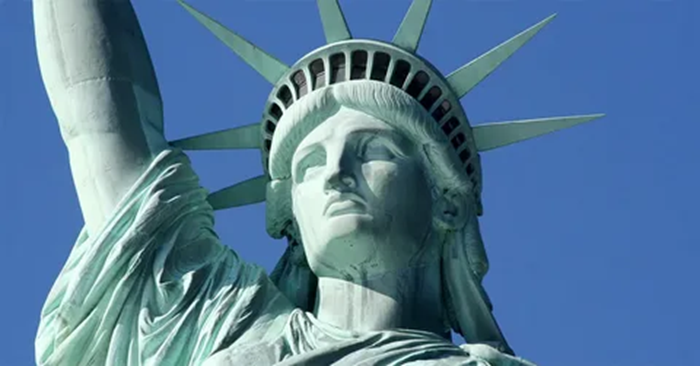The most famous symbol of the United States appeared in New York in 1886. The figure of a woman holding a torch in one hand and a tablet with the date of the country’s declaration of independence from Great Britain (July 4, 1776) inscribed on it has remained the largest in America for a century and a half.
Here’s what the numbers say about this landmark:
- The total height of the Statue of Liberty is just under 93 meters, of which 46 meters are the figure itself with the torch and about 47 meters are the pedestal.
- The outer cladding is made of copper sheets, the total weight of which is more than 31 tons.
- The copper sheets are fixed to a strong iron frame weighing 125 tons.
- The weight of the concrete base is almost 25.5 thousand tons.
- The head of the statue is crowned with a crown, which serves as an observation deck, with 25 holes and seven points.
- The number of rays symbolizes the continents of the planet and refers to the original name of the sculpture – “Liberty Enlightening the World”.
- The torch is covered with 24-karat gold, but it was not always so. In the original, this part of the sculpture was copper and had a burner built into it for the real flame. In 1886, the torch was replaced with a gold version, which shimmers in the sun on sunny days.
The French origin of the monument is a well-known fact, but few people know that America owes its appearance not to the government of the European country.
Who invented the Statue of Liberty
The idea of creating the monument belongs to Edouard de Laboulaye, the head of the anti-slavery society in France. He admired the American political system, based on the principles of democracy, and in a gift to the United States, Laboulaye saw an opportunity to strengthen ties with this country. In 1865, he began to casually mention his idea at dinner parties. Sculptor Frederic Bartholdi was present at one of these meetings. For him, the development and implementation of the statue project was an attractive proposition that promised worldwide fame.


